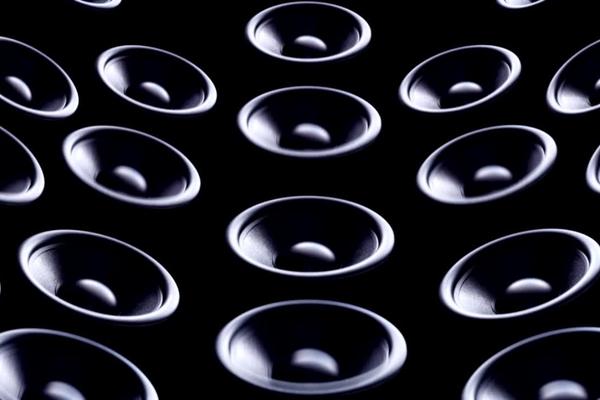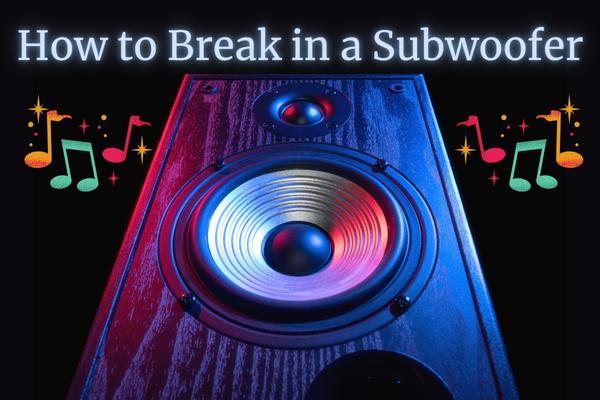How To Break in a Subwoofer
So you’ve got yourself a brand new subwoofer, but you’re not sure how to break it in? Fear not, it’s not difficult, it just takes a bit of patience and control.
The term “breaking in a subwoofer” refers to the process of gradually using the subwoofer at low to moderate volume levels over a certain period of time to allow its components to warm up and achieve optimal performance.
Breaking in a subwoofer is essential as it helps to enhance the flexibility of the speaker components, especially the surround and the spider, that contribute to its overall performance. A well-broken-in subwoofer will deliver richer, deeper, and smoother sound quality.
This guide will take you through a step-by-step process of how to break in a subwoofer, from understanding its mechanism, creating an ideal environment, executing the break-in process, and what you can do to make sure it’s done properly.
Understanding the Mechanism of a Subwoofer
Before we get going, let’s take a look at exactly what a subwoofer is. A subwoofer typically consists of a woofer housed in a dedicated enclosure, powered either by an internal or an external amplifier. The key components include the speaker cone, surround, spider, voice coil, and magnet.

When an electrical audio signal is sent to the subwoofer, it moves the voice coil, which is attached to the cone. The movement of the cone creates air pressure waves that we interpret as sound. The surround and spider are crucial parts that allow the cone to move freely while keeping it centered.
During the break-in process, the surround and spider, often made of flexible materials, are exercised and loosened up. This makes them more flexible, allowing the cone to move more freely. The result is a subwoofer capable of greater excursion (cone movement), which is capable of producing deeper, more accurate bass.
The Ideal Environment for Breaking In a Subwoofer
- Choosing a safe location: You should place your subwoofer in a location where it’s not likely to be knocked over or disturbed during the break-in process. It should be on a flat and solid surface to prevent it from moving due to vibration.
- Controlling the temperature and humidity: Ensure the room is kept at a normal room temperature and humidity level. Extreme cold or heat and high humidity can potentially affect the performance and longevity of your subwoofer.
- Reducing possible disturbances: The break-in process involves running the subwoofer at a moderate volume level for an extended period. This could cause a disturbance in certain situations. Try to pick a time and place where this won’t be an issue, like when you’re out of the house or in a separate room.
Step-by-step Guide – How to Break in a Subwoofer
- Setting up the subwoofer: Properly install the subwoofer in your preferred location. Ensure the connections are correct and the subwoofer is securely mounted.
- Choosing the right volume level: Begin the break-in process by playing bass-heavy music at a low to medium volume. It’s important to resist the temptation to crank up the volume. The mantra here is “low and slow.”
- Selecting suitable break-in material: Choose your favorite bass-driven tracks from genres like metal, rap, or techno. These genres will provide the necessary low-frequency output for the break-in process.
- Running the subwoofer continuously: Play your music for about two hours a day. This time frame isn’t rigid and can be adjusted depending on the subwoofer and your sound system.
- Monitoring the process and making necessary adjustments: While breaking in your subwoofer, keep an eye (and nose) out for any signs of issues. If you detect a strange smell, like a burning scent, it could be a sign that the break-in process is too intense or too rapid. This could potentially damage the coil or glue.
- Recognizing a properly broken-in subwoofer: The break-in time can vary, some may take two days while others can take up to two weeks. You’ll know your subwoofer is broken in when you notice a significant improvement in the bass performance.
- Congrats, you’ve broken in your subwoofer: Now you know how to break in a subwoofer, but now it’s done don’t be tempted to crank up the bass, just take it nice and steady.
Tips and Tricks to Enhance the Break-in Process
Patience is key during the break-in period. It’s tempting to test the full power of your new subwoofer, but it’s worth waiting until after the break-in period for optimal sound quality.
Don’t blast the volume during the break-in period, or immediately after. This can strain the subwoofer’s components, potentially leading to damage. If you notice a strange smell coming from the subwoofer, this may signal that the coil or glue is burning, indicating that the volume is too high.

How to know when the subwoofer is fully broken in? Well, the most reliable sign is a noticeable improvement in bass performance. The subwoofer should produce a smoother, deeper bass sound. The time it takes can vary, but typically ranges from a few days to a couple of weeks.
How to Break in a Subwoofer
Having read this, you now have a good understanding of your subwoofer’s mechanism, creating an ideal environment for break-in, and the actual break-in process. It’s not difficult, in fact the hardest part is being patient, but patience will yield a significantly better bass performance.
Your sound system deserves the best, so taking the time to properly break in your subwoofer is an investment in quality sound. So, embrace the process, exercise patience, and enjoy the benefits of a well-broken-in subwoofer.
FAQs
What does breaking in a subwoofer mean?
Breaking in a subwoofer is the process of gradually using the subwoofer at low to moderate volumes over a certain period to allow its components to loosen up and achieve their optimal performance level. This is similar to a break-in period for a new car.
Is it necessary to break in a subwoofer?
Yes, it’s necessary to break in a subwoofer. The process allows the flexible components of the subwoofer, such as the surround and spider, to become more flexible, allowing the subwoofer to produce deeper and more accurate bass.
How long does it take to break in a subwoofer?
The length of time it takes to break in a subwoofer can vary, usually ranging from a few days to up to two weeks. This can depend on the specific subwoofer model and how often and at what volume you use it during the break-in period.
Can I damage my subwoofer by not breaking it in properly?
Yes, it’s possible to damage your subwoofer by not breaking it in properly. Playing it at high volumes without a proper break-in period can strain the subwoofer’s components, potentially leading to damage.
What type of music is best for breaking in a subwoofer?
The best type of music for breaking in a subwoofer is music with heavy bass content. Genres like metal, rap, or techno work well because they can exercise the subwoofer’s full range of motion.
What volume level should I use during the break-in period?
During the break-in period, it’s recommended to play music at a low to moderate volume. This gives the subwoofer’s components a chance to loosen up without being strained.
Why does my subwoofer smell funny during the break-in period?
A strange smell coming from your subwoofer during the break-in period could indicate that the coil or glue is burning, which suggests that the volume is too high. It’s important to monitor the subwoofer closely and adjust the volume as needed during the break-in period.
How will I know when my subwoofer is fully broken in?
You’ll know when your subwoofer is fully broken in when you notice a noticeable improvement in its bass performance. The bass should sound deeper, smoother, and more accurate.
Can I crank up the volume once the subwoofer is broken in?
Even after the subwoofer is broken in, it’s not advisable to immediately crank up the volume or bass, as this could still damage the subwoofer. It’s recommended to increase these settings gradually and continue to monitor the subwoofer’s performance closely.
How do I prevent my subwoofer from vibrating excessively?
Excessive vibration is often a sign that the volume or bass is set too high for the subwoofer to handle. After ensuring the subwoofer is properly installed and secured, you should adjust your volume and bass settings to levels that the subwoofer can handle without vibrating excessively.

I am a passionate and skilled car audio enthusiast with 15 years of experience in the industry. My journey started when I replaced my first set of factory car speakers, sparking a deep love for high-quality sound. Since then, I have worked as a representative for renowned brands like Kenwood and Alpine.
With a background in both retail and distribution, I have developed a comprehensive understanding of the car audio market. Currently a certified (MECP) installer in the Mobile Electronics industry, my expertise lies in delivering top-notch audio installations. My knowledge, coupled with my genuine passion, makes me the go-to professional for all car audio needs.


